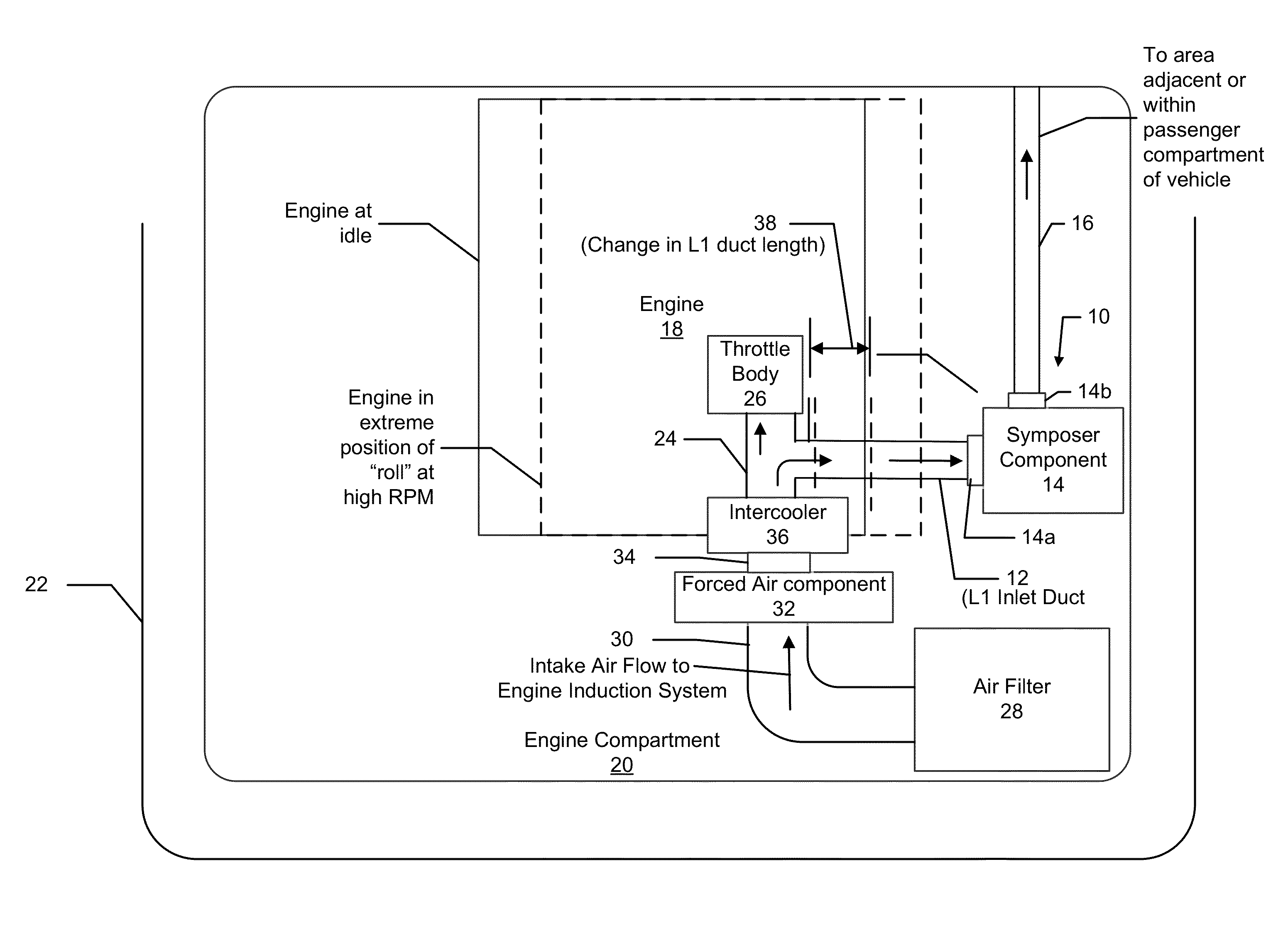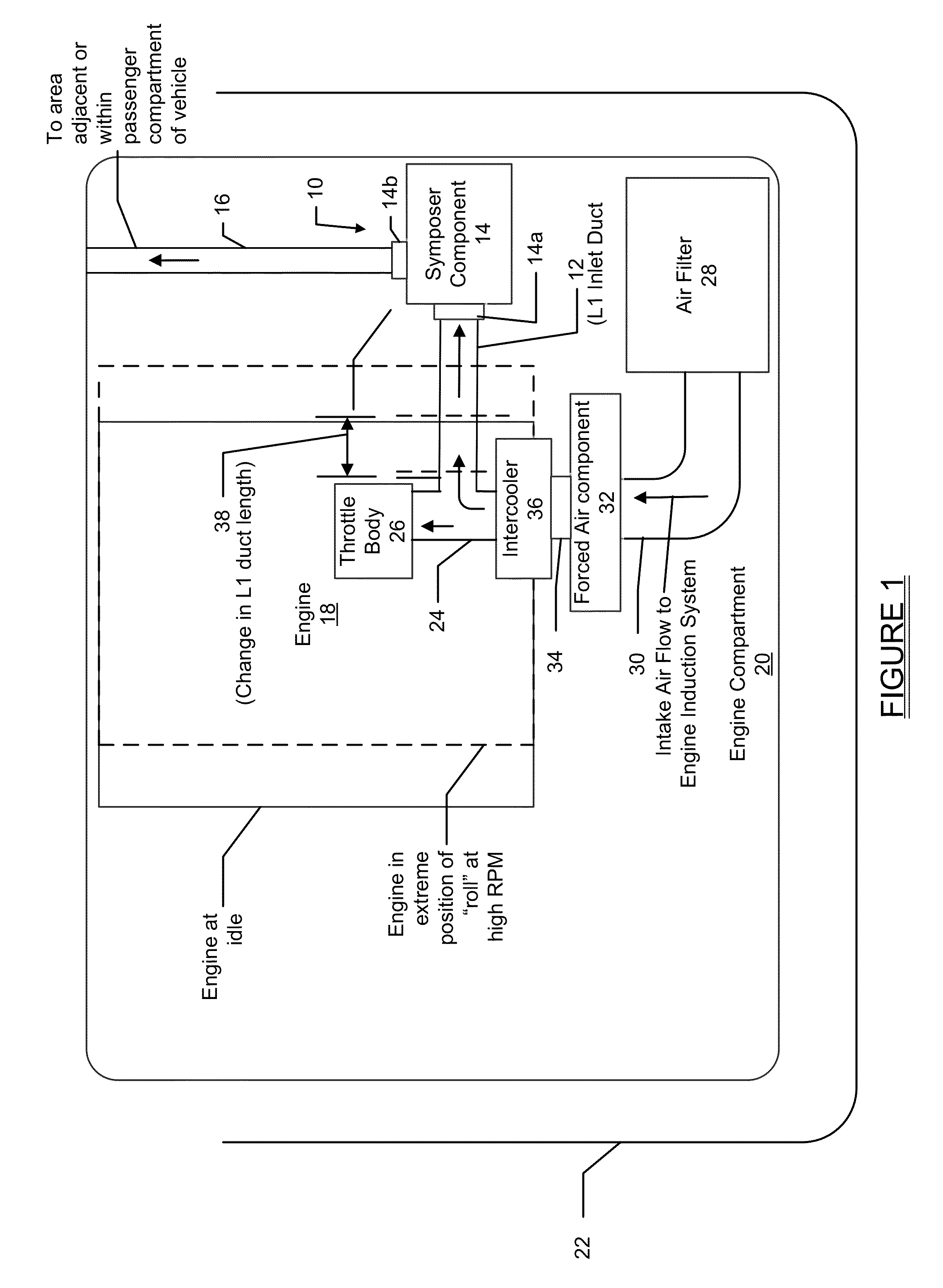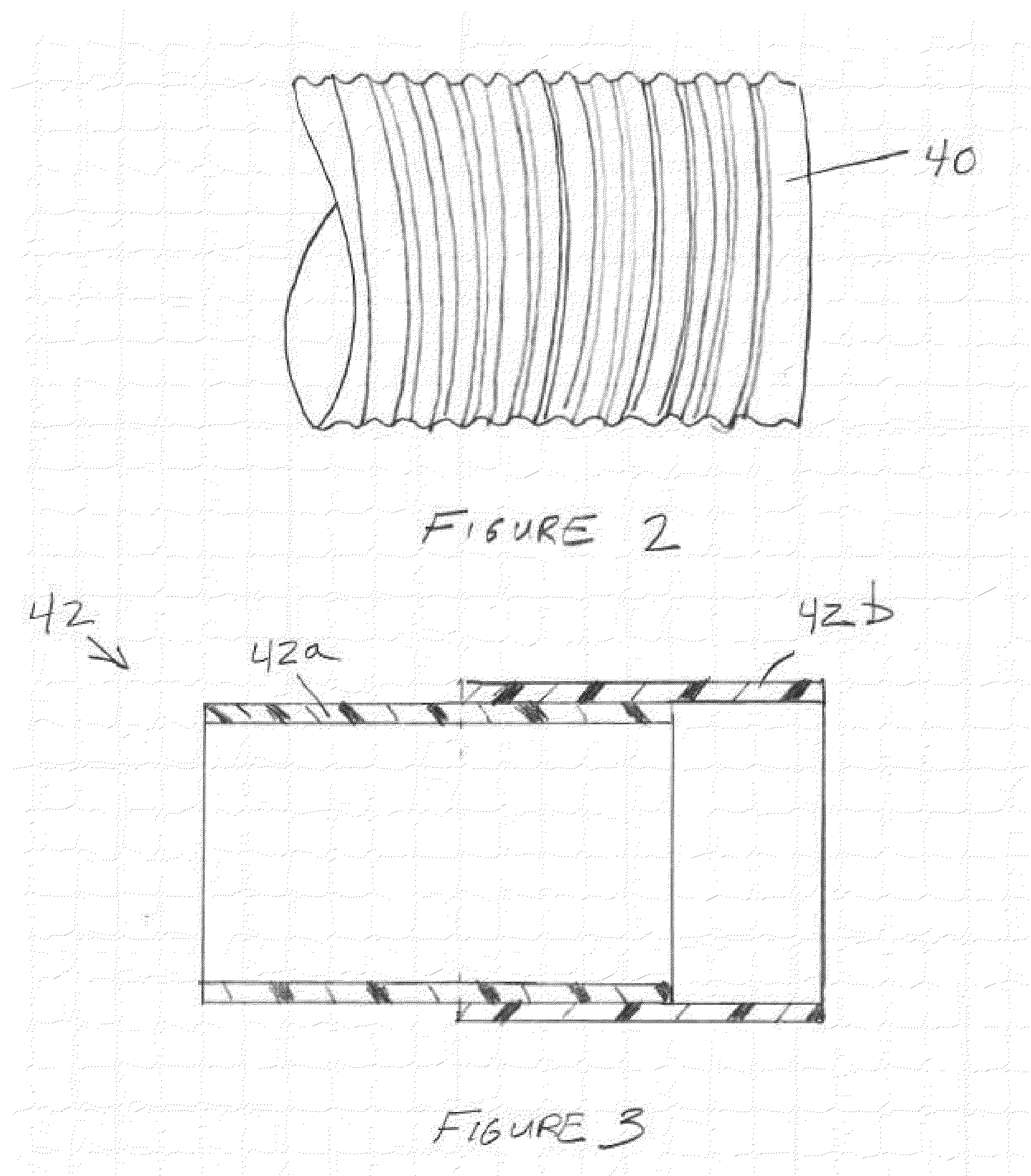Sound amplifier system and method for amplifying engine sounds
a sound amplifier and engine technology, applied in the direction of machines/engines, combustion air/fuel air treatment, transportation and packaging, etc., can solve the problems of significant attenuation of engine sound within the cabin of the vehicle, the need for audible engine sound within the cabin is not necessarily as desirable, and the system is typically limited to operating within a relatively narrow frequency rang
- Summary
- Abstract
- Description
- Claims
- Application Information
AI Technical Summary
Benefits of technology
Problems solved by technology
Method used
Image
Examples
Embodiment Construction
[0016]The following description is merely exemplary in nature and is not intended to limit the present disclosure, application, or uses. It should be understood that throughout the drawings, corresponding reference numerals indicate like or corresponding parts and features.
[0017]Referring to FIG. 1 there is shown a sound amplification system 10 in accordance with one embodiment of the present disclosure. The sound amplification system 10 in this example is formed by a symposer system, and simply for discussion purposes will be referred to throughout the following specification as “symposer system 10”. The symposer system 10 will be described in connection with an engine having a forced air induction system, for example a turbocharged or supercharged engine. It will be appreciated, however, that the teachings described herein are equally applicable to naturally aspirated engines which typically use sound pipes. As such, the embodiments of the symposer system 10 described herein are n...
PUM
 Login to View More
Login to View More Abstract
Description
Claims
Application Information
 Login to View More
Login to View More - R&D
- Intellectual Property
- Life Sciences
- Materials
- Tech Scout
- Unparalleled Data Quality
- Higher Quality Content
- 60% Fewer Hallucinations
Browse by: Latest US Patents, China's latest patents, Technical Efficacy Thesaurus, Application Domain, Technology Topic, Popular Technical Reports.
© 2025 PatSnap. All rights reserved.Legal|Privacy policy|Modern Slavery Act Transparency Statement|Sitemap|About US| Contact US: help@patsnap.com



